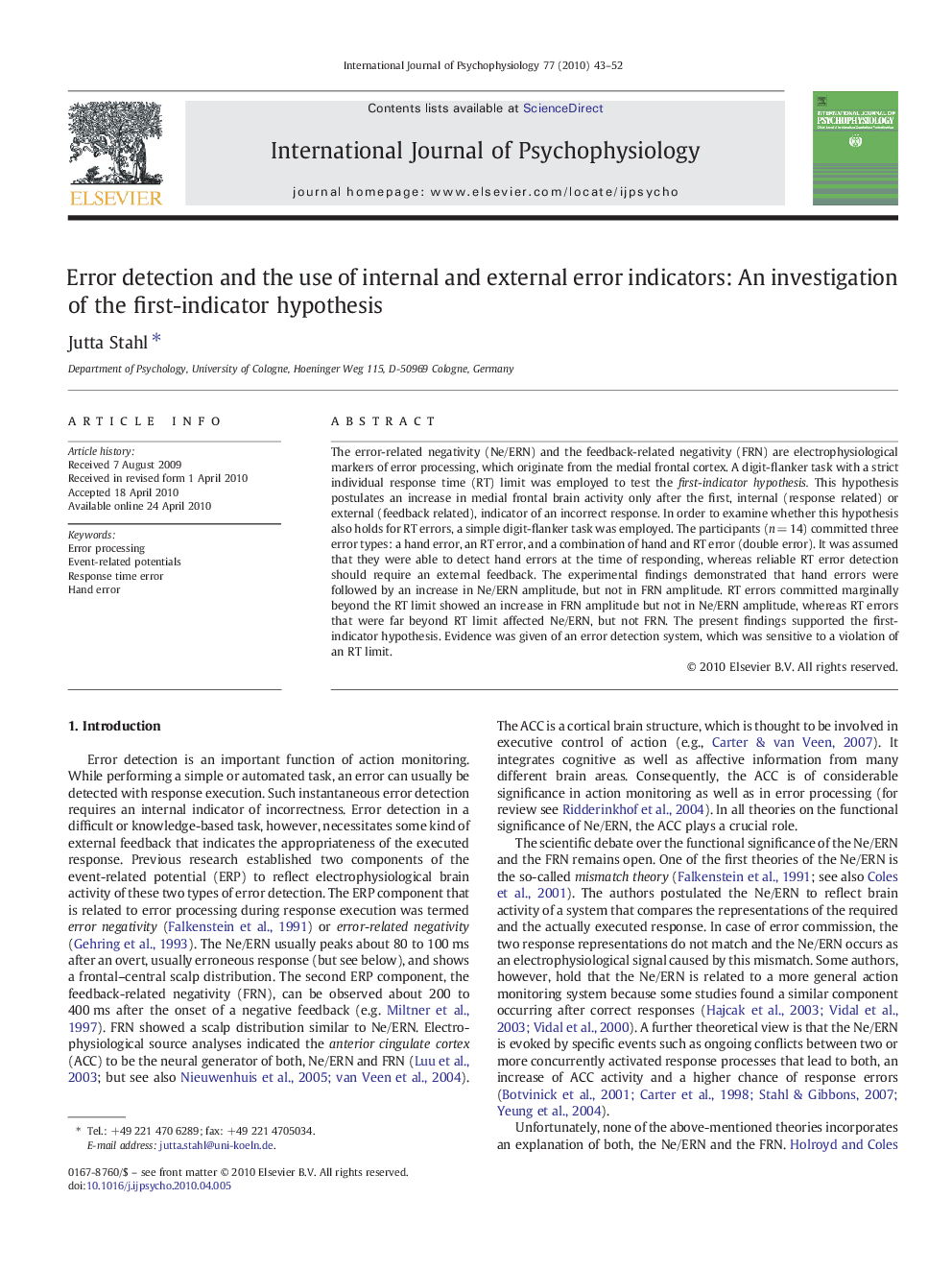| کد مقاله | کد نشریه | سال انتشار | مقاله انگلیسی | نسخه تمام متن |
|---|---|---|---|---|
| 930812 | 1474465 | 2010 | 10 صفحه PDF | دانلود رایگان |

The error-related negativity (Ne/ERN) and the feedback-related negativity (FRN) are electrophysiological markers of error processing, which originate from the medial frontal cortex. A digit-flanker task with a strict individual response time (RT) limit was employed to test the first-indicator hypothesis. This hypothesis postulates an increase in medial frontal brain activity only after the first, internal (response related) or external (feedback related), indicator of an incorrect response. In order to examine whether this hypothesis also holds for RT errors, a simple digit-flanker task was employed. The participants (n = 14) committed three error types: a hand error, an RT error, and a combination of hand and RT error (double error). It was assumed that they were able to detect hand errors at the time of responding, whereas reliable RT error detection should require an external feedback. The experimental findings demonstrated that hand errors were followed by an increase in Ne/ERN amplitude, but not in FRN amplitude. RT errors committed marginally beyond the RT limit showed an increase in FRN amplitude but not in Ne/ERN amplitude, whereas RT errors that were far beyond RT limit affected Ne/ERN, but not FRN. The present findings supported the first-indicator hypothesis. Evidence was given of an error detection system, which was sensitive to a violation of an RT limit.
Journal: International Journal of Psychophysiology - Volume 77, Issue 1, July 2010, Pages 43–52